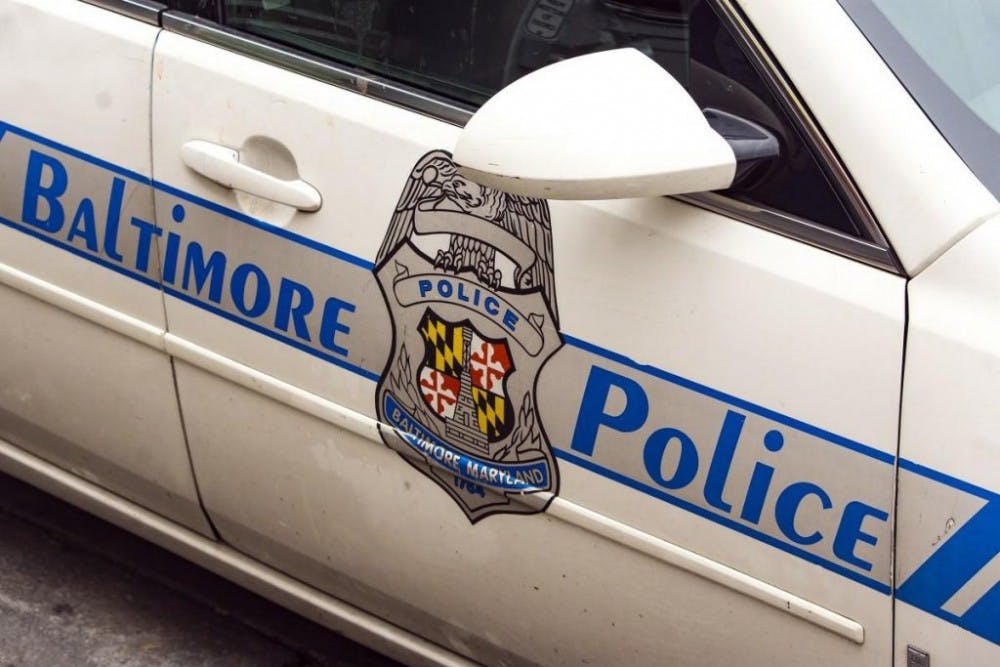The Johns Hopkins Center for Gun Policy and Research released a study in January evaluating the tactics of the Baltimore Police Department (BPD) to counter gun violence in the City. According to the study, sending plainclothes officers into areas with high levels of crime is the most effective way to reduce gun violence.
Using this method, known as the Violent Crime Impact Section (VCIS), BPD stations police officers dressed in casual attire such as jeans and shirts in “hot spots” to find guns owned illegally by individuals with histories of gun offenses and violent gangs.
Daniel Webster, a Bloomberg professor of American health in the Department of Health Policy and Management, is the director of the Center and an author of the report.
He said that the new study builds on the Center’s past research on illegal gun seizure tactics.
“We’ve been able to demonstrate in a number of studies that [those tactics] lead to fewer people being shot both in homicides as well as suicides,” Webster said.
The study, titled “Estimating the Effects of Law Enforcement and Public Health Interventions Intended to Reduce Gun Violence in Baltimore,” found that VCIS resulted in a 12 to 13 percent decrease in homicides in the violent areas, along with a 18 to 20 percent decrease in non-fatal shootings.
VCIS has proved controversial since its inception in July 2007. Many of the plainclothes officers have faced allegations of mistreating citizens and falsely reporting overtime pay. Some of these complaints have led to lawsuits against the City, and some say it heightens the community’s distrust of police officers.
Webster addressed the controversy, saying that while VCIS was one focus of the study, the researchers also hoped to address the implications of BPD’s practices.
“What’s important is their mission,” he said. “How are they supervised, trained, rewarded or — when they need to be — sanctioned?”
Many researchers have sought a solution to Baltimore’s rising homicide rate, particularly focusing on violent areas of the city. Webster said that he hoped to evaluate the implications of some of those methods.
“What hasn’t been studied sufficiently is the degree to which those kind of units cross the line of unconstitutional policing that cause the community to lose trust in the police,” Webster said.
The BPD did not respond to a request for comment.
VCIS was officially shut down in spring 2017 by former Baltimore Police Commissioner Kevin Davis.
According to Webster, the study aims to provide lawmakers with the information they need to create better gun control policies.
“We work very closely with people who are in positions to make changes,” Webster said. “We’re trying to operate in a place where we are providing decision makers with the best evidence to make their decisions and their strategies so we get better outcomes.”
Over the past 20 years, the Center has researched a number of issues relating to gun violence, including youth safety. Current research on firearm safety seeks to prevent youths from accessing improperly stored firearms, reducing the rate of accidental shootings and teen suicides.
Dr. Peter Beilenson, a Hopkins professor and former Baltimore City Health Commissioner, said that the City should reopen Operation Safe Kids, a campaign to monitor and support high-risk juvenile offenders. Operation Safe Kids worked closely with about 150 youths with previous criminal records.
The youths were closely monitored. Their absences from school were documented, and if there were ongoing issues with current school placement, students were relocated. They worked closely with case managers.
“The estimate is that at any given time in Baltimore there are probably 300 to 500 juveniles who are truly at risk of shooting or being shot,” he said. “You have to reach several hundred people, which they did with Operation Safe Kids.”
He went on to say that Baltimore had the highest number of juvenile homicides in the United States in the early 2000s. In many cases, the program was an alternative to juvenile detention.
Beilenson said there was a 45 percent reduction in repeat offenses. He added that the biggest problem was simply the number of guns in Baltimore.
“[There are] literally as many guns as people in Baltimore, mostly in illegal hands,” he said. “You have to address people who are at risk of shooting or being shot while keeping them alive, trying to generate a new generation of kids who don’t go down the path of this behavior.”





